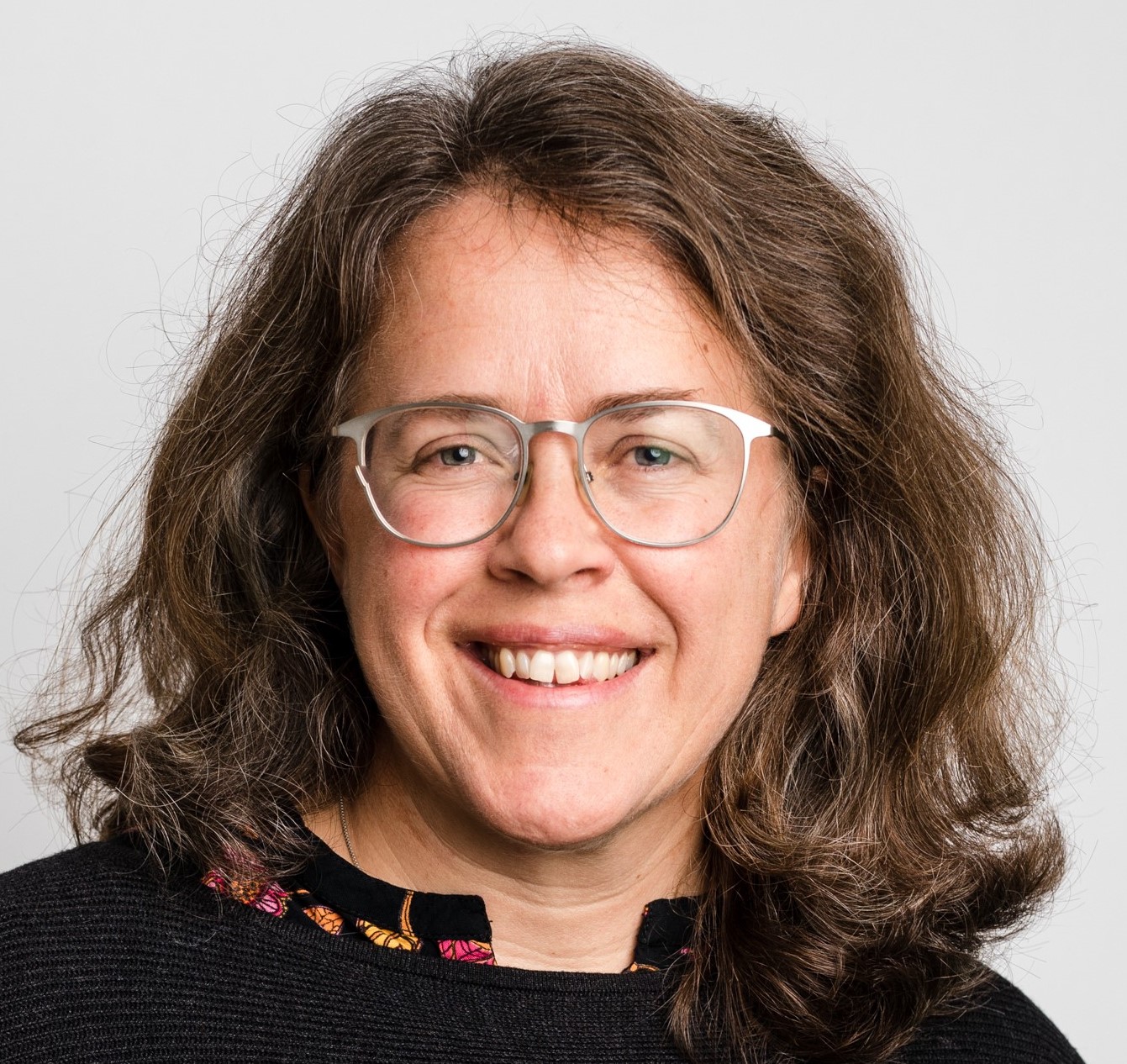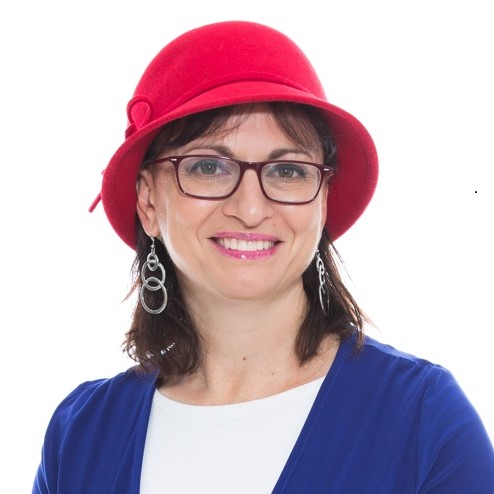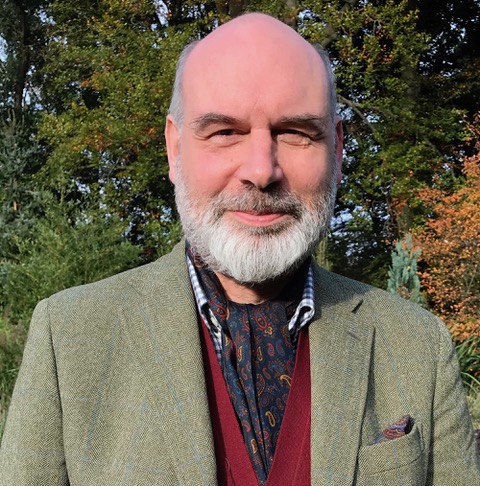The Supervisory Committee has the following key responsibilities:
- To decide the general strategies and policies
- To appoint the Director (Management)
- To supervise and to support the director
Members of the Supervisory Committee are:
- Eva Sandberg (Sweden), Acting Chair
- Yael Bamberger (Israel)
- Barbara Gołębiowska (Poland)
- Jurn Buismann (Netherlands)
- Gerald Wagenhofer (Austria)

Eva Sandberg (Sweden)
Acting Chair
In the 1990s, I was guide for a company that organized walking tours around Europe. I had worked for a while in a Nature Visitor Centre in the National City Park of Stockholm. With a fresh exam in biology and earth sciences from Stockholm University and a true environmentalist, I thought it was a great job. It gave me a chance to connect people with local nature and talk about global questions such as climate change, biodiversity loss and the growing movement of Agenda 21 (following the Rio-conference in 1992). The European job offered discovery of the nature and culture of landscapes in Brittany (France), Madeira (Portugal), The Channel Islands (UK), Austria and my favourite: a two weeks tour on mainland Greece – and lots of experience-based knowledge and a strong interest in the practice of guiding.
Back in Stockholm, I worked for the NGO, the Swedish Society for Nature Conservation, with campaigns for urban biodiversity and with environmental education in the Skansen Outdoor Museum. It encompassed visitor studies in protected areas for the Stockholm County Administration and websites (new then!) for people who wanted to discover nature close to the city. The ambition was to instill a sense of belonging and ownership to places and was a strategic part of the protection of the green wedges stretching towards the centre of Stockholm from the surroundings. A number of people from the University were contracted as guides for the Greater Stockholm Area Nature Guides. We organized training and invited Sven Hultman (who had studied interpretation in the US in the 1960s) to introduce interpretation to the group. The word and world of interpretation was new to me. And it was good news! I realized that there was a professional culture – and theory – for what I had been doing for so long.
Since 2008, I have been head of the Centre for Nature Interpretation at the Swedish University of Agricultural Sciences. I am engaged in education and development of interpretation and am particularly interested (still!) in how nature interpretation might contribute to well-informed commitment to nature conservation and sustainable development. We have a strong collaboration with people involved in nature interpretation in the Nordic countries. I was the main editor and one of the authors of Nature interpretation in the Nordic countries – a book about experiences, learning, reflection and participation when people and nature meet (PDF Nordic council of ministers 2020).
I am an IE Certified Interpretive Guide and Trainer and have been a member of interpret Europe since 2010. In 2013 our Centre, Interpret Europe and the National Association for Interpretation organized an international conference in Sweden. Many great lecturers and professionals in the field joined us. The theme of the conference was ‘Interpretation can make us citizens of world’ – an idea that in my opinion is more relevant than ever today.

Yael Bamberger (Israel)
Member
My path in the world of heritage interpretation began precisely in the world of science. After completing my undergraduate degree in physics, I taught math and physics in high school for a number of years.. But because I was always drawn to the world of museums, I soon found myself studying for a master’s degree and then a doctorate in museum education, still in the natural sciences. My research dealt with the special learning experience that takes place in museums of nature and science. This work won the Israel Foundation Trustees award, The Miriam and Aaron Gutwirth Award for Excellence, and the NARST International Committee Award. I did my post-doctoral work at the University of Michigan in the USA. There, I also researched learning characteristics in museums and other informal learning environments. When I returned to Israel, I was involved in the development of curriculum materials at the Weizmann Institute and then in the development of educational programs at the Israel National Museum of Science, Technology and Space. It was during those years that the field of interpretation began to arise in Israel. When I became acquainted with this field, it attracted me to it like a magnet, and since then my heart and mind have been in the same spot. I teach interpretation in academic and other settings, conduct heritage interpretation workshops, plan interpretative plans for heritage sites and try to find time for writing. By the way, the book I wrote, Taking Form: Specification of Museum Spaces, is going to be published soon by the Council for Conservation of Heritage Sites in Israel. Today I am the head of Interpret IL, the National Israeli Interpretation organization, and am responsible for all its activities. IE is the model from which we learn and are inspired by it. We have found that international discourse is a source of learning and specialization. One of our problems, both in Europe and in Israel, is that the world of heritage does not know about our existence or does not understand the need for interpretation. I see our role in creating international recognition in the field of interpretation as a discipline, in explaining the need for specialization in the field and in building professional frameworks that make a difference. International collaborations can help create this infrastructure.

Member
I am the director of the Maria Skłodowska-Curie Museum in Warsaw, leading a deep institutional transformation and developing a new permanent exhibition using an interpretive approach. I am deeply fascinated by the history of women and am committed to bringing their stories into the spotlight. Maria Skłodowska-Curie’s story is the extraordinatory example —she was a woman who overcame every obstacle and changed the world as we know it. Together with my team, I want to share this story in a way that inspires our visitors, showing them that curiosity, perseverance and passion can shape the future.
Previously, I worked as a Head of Education at the Józef Piłsudski Museum in Sulejówek where I played a key role in shaping the museum from its inception. Passionate about heritage interpretation, I hold CIP, CIG and trainer certifications. In 2022 and 2023, I secured Erasmus+ funding to enable 30 museum professionals to participate in the Certified Interpretive Guide (CIG) courses in Croatia. Since 2024, I have served as the Country Coordinator for Interpret Europe in Poland, supporting the development of interpretation in the country.
I love my work as a trainer and, beyond my role as a director, I continue to pursue my passion for interpretation and education. I lecture in postgraduate museum studies at the University of Warsaw and train professionals through Echocast, a practice-oriented program for customer service in heritage institutions. Lifelong learning is central to my work – I completed postgraduate studies in cultural heritage protection at the Warsaw University of Technology and attended the Women’s Leadership Academy LiderShe at Kozminski University. I have twice been awarded a Ministry of Culture and National Heritage scholarship – first to create a biographical website on painter Maria Ewa Łunkiewicz-Rogoyska (www.mewalunkiewicz.pl) and later to write a guide on designing interpretive panels at heritage sites which I also taught in workshops.
Outside of work, I love exploring the world – whether by bike, ski, kayak, sailboat or on foot. Museums, wild waters and open skies are my favorite places to be.

Jurn Buisman (Netherlands)
Member
I was groomed to follow my father as president of a substantial family business and was brought-up in a country estate’s mansion with lots of old stuff around, this last feature interested me far more. Therefore, after finalising my business economy studies and working a blue Monday with today’s KPMG, I moved to the world of cultural heritage. First, I worked parttime and for nearly a quarter of a century since as a fulltime heritage professional.
Since the late eighties, I have been involved in quite a wide scope of cultural heritage projects, ranging from establishing an ‘avant la lettre’ cultural impact investment fund to leading major restoration projects, such as the full restoration of a 17th-century mansion and its garden in the Amsterdam Channel District, the ‘Geelvinck Hinlopen Huis’, and the restoration of the major mural ‘Le Rêve de la Paix’ at the Library of the Palais des Nations in Geneva for the United Nations.
Since the early nineties, I was the driving force behind Museum Geelvinck. For this museum, with my wife Dunya – a cultural anthropologist and a feminist – we developed about one major exhibition a year on very diverse themes. These included: historic gardens, the trans-Atlantic slave trade, traces of the Dutch colonies, etchings by Rembrandt, export porcelain province plates etc. Many of these exhibitions encompassed loans from museums all over Europe.
Heritage interpretation – how to present the stories – is key to developing impactful exhibitions. During the last ten years, the focus of our museum has gradually shifted to historic pianos from the 18th and 19th centuries..
Today, I am in the process of developing a network-museum for this working collection of some 450 historic pianos and other keyboard instruments. This effort also includes organising series of chamber concerts, as well as – by now worldwide the largest – annual festival of fortepianos used for competition, symposium etc.. Again, this is not just about the living heritage of music but, instead, the emphasis is on giving historical context around the concert programs which the museum presents.
In the past thirty years, I have been a member of ICOM (DemHist, CIMCIM and ICLCM), ICOMOS (including ICOMOS-IFLA ISCCL and ISC Water), Slow Food, REMA–European Early Music Network, and Europa Nostra and, in the last ten years, I have been active internationally within these organisations. I am happy to share my experience and to serve as a linking-pin in support of Interpret Europe.

Gerald Wagenhofer (Austria)
Member
Gerald Wagenhofer is a versatile business consultant based in Vienna, managing his own company since 2006. Originally Gerald attended the University of Economics in Vienna, gaining a degree in management as a Master of Business Administration. Gerald is also a certified management consultant, a certified Lean Six Sigma Master Black Belt and a certified Trainer for Cultural Heritage and Sustainability Manager. In the last 30 years he has volunteered as a board member of NGOs, acting as chairman and treasurer in different associations.
Gerald’s expertise extends over several fields and sectors, having over 30 years of experience in strategy development and implementation, accounting and governing . an experienced trainer and coach as well as a successful manager of (EU) projects. His clients mainly are public service organisations, international companies and private cultural heritage organisations. Some examples are Burghauptmannschaft Österreich, a subordinate office of the Austrian Ministry of Economy, the Austrian Research Promotion Agency, the Climate and Energy Fund, Telefonica Germany, German Telekom, DB Schenker, Knorr Bremse, the Esterhazy Foundation and the City of Regensburg.
Beside a strong focus on strategic planning and implementing, roll-out planning, accounting and governing, Gerald builds on competences he acquired during attendance at a technical school, which gave him a deep understanding of traditional building materials, building physics as well as measurement and control engineering. Thus, he has initiated and implemented several EU projects in various funding programmes like Erasmus+, Creative Europe, H2020,and a FLIP2 Pilot Project of the EU Commission named INCREAS. This gained a total of about 4 million euros for innovative further development and training.
He has also been engaged in the application for the European Heritage Label for the Imperial Palace Vienna, managing this project as well as the EHL@Network running from 2019 to 2022. The main focus for his projects and training programmes is cultural heritage, while integrating elements of sustainability and climate protection.
Personally, Gerald is known for his excellence in delivering budget calculations and project management while at the same time getting deeply involved in the development of further training for professionals in cultural heritage. Applying his intense knowhow of EU programmes and EU projects is his pleasure and he is passionate about protecting our European cultural heritage.
